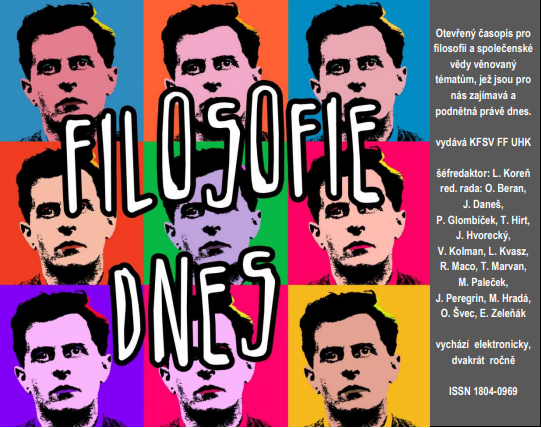Za které životy netruchlíme? Uražení a ponížení v díle Judith Butlerové
DOI:
https://doi.org/10.26806/fd.v8i1.219Abstract
Úvodní část kritické stati stručně představuje autorku a prezentuje strukturu a obsah knihy Rámce války: za které životy netruchlíme?. Zohledněn je širší kontext a zvláštní ohled je věnován představení dosavadní publikační činnosti Judith Butlerové. Cílem je poukázat na to, že tematické zaměření a hlavní ideová východiska knihy mají v celém díle autorky nepopiratelnou kontinuitu.Následující pasáže se zaměřují na zprostředkování vybraných myšlenek více do hloubky, s důrazem zejména na rozbor autorčiny pozice k fenoménu my a oni a vztahu já k druhému. Kromě toho je pozornost věnována i konceptu rámování, v jehož osvojení tkví zvláštní význam pro porozumění hlavním autorčiným závěrům. Hlavní výhrady a polemika příležitostně prostupují celou prací, závěr poskytuje pouze shrnutí.
The introductory part of the critical essay briefly introduces the author and presents the structure and content of the book Frames of War: When is Life Grievable?. Special regard is given to the broader context, particularly to referring to other works of Judith Butler that have already been published. The purpose is to point out the fact that the thematic interest and ideological basis of the book are deeply rooted and have undeniable continuity across Butler`s work. The following passages aim to present selected ideas in more detail, with a special focus on the analysis of the author's position to the Us and Them phenomenon or relation between Self and the Other. Besides this, attention is paid to the explanation of the concept called framing, in order to understand its particular importance for drawing key conclusions of the author. Major objections and reasons for disputation occasionally appear throughout the essay, the final part offers summary only.
Downloads
Published
Issue
Section
License
Authors who publish in this journal agree that:
1. Authors retain copyright and guarantee the journal the right of first publishing. All published articles are licensed under the Creative Commons Attribution license, which allows others to share this work under condition that its author and first publishing in this journal was acknowledged.
2. Authors may enter into other agreements for non-exclusive dissemination of work in the version in which it was published in the journal (for example, publishing it in a book), but they have to acknowledge its first publication in this journal.
3. Authors are allowed and encouraged to make their work available online (for example, on their websites) as such a practice may lead to productive exchanges of views as well as earlier and higher citations of published work (See The effect of open access).


